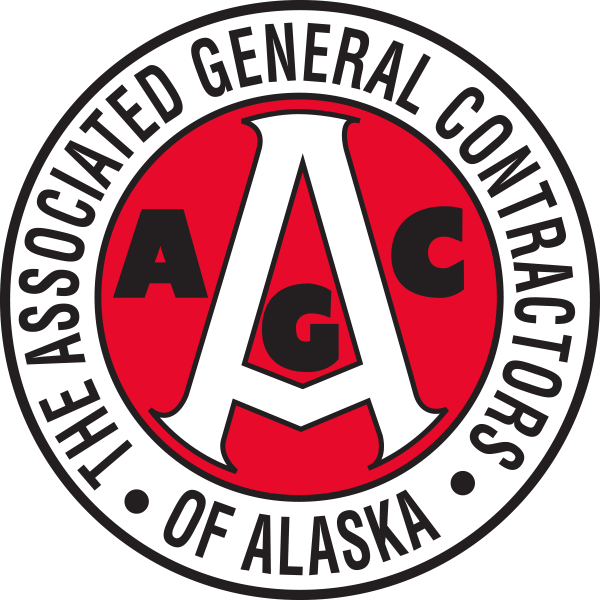

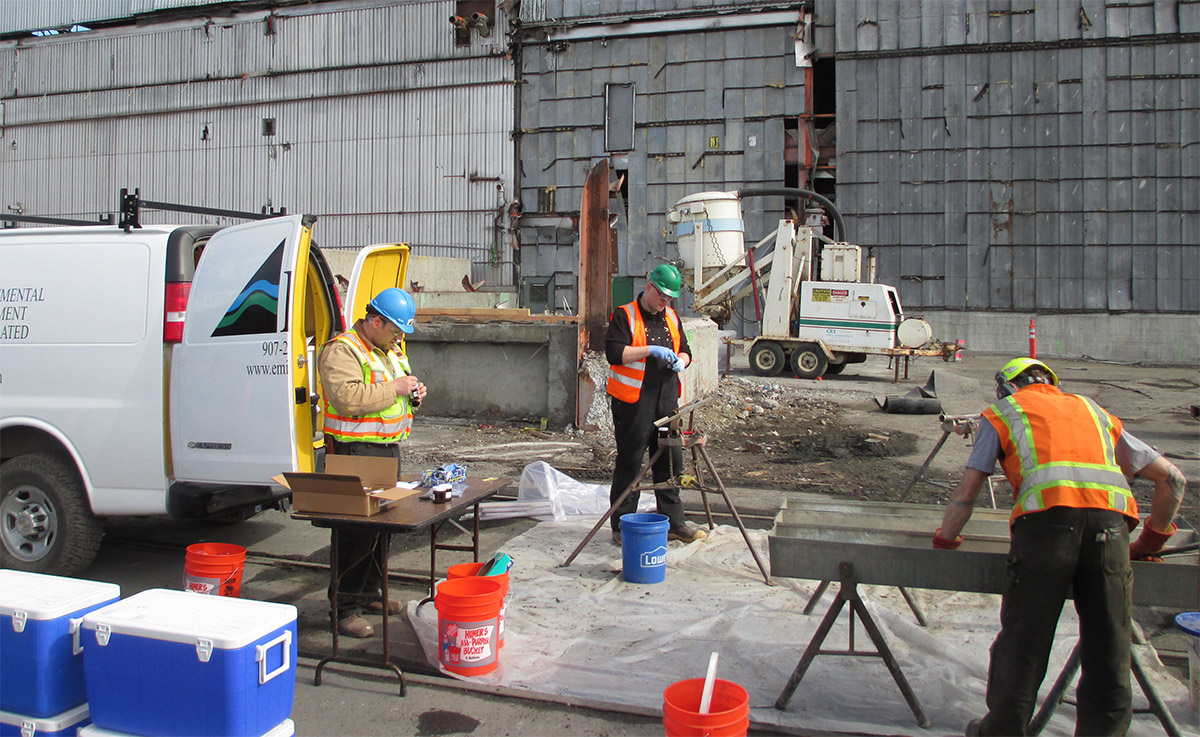
hen it comes to providing the best service for its clients, the secret to success for Environmental Management, Inc., or EMI, can be summed up in two words: flexibility and adaptability.
“We don’t believe in cookie-cutter solutions,” says EMI co-owner Shayla Marshall. “We strive to find creative solutions to meet our client’s needs.”
Environmental Management, Inc. is an Anchorage-based company that has specialized in environmental consulting, engineering, and training services since 1988. While the bulk of EMI’s projects are located in Alaska, Marshall says it also provides professional services across the United States and internationally.
The Alaskan-owned company started two years after the Asbestos Hazard Emergency Response Act (AHERA) was signed in 1986 by then-President Ronald Reagan, with a focus on helping its clients navigate and provide training under this new law, says Marshall, who shares company ownership with Stuart Jacques and Larry Helgeson.
Seven employees make up the consulting department, while the training department employs three full-time trainers and a variety of contracted trainers.
EMI’s full-time trainers have more than thirty-five years of field experience in their content area, teaching classes in a variety of communities across the state.
“We do a lot of classes that fit the needs of a particular community,” Smith says.
Classes include a range of topics that revolve around safety and construction. Smith says the most popular is the forty-hour Hazardous Waste Operations and Emergency Response, otherwise known as the HAZWOPER 40 Hour, which requires a refresher every year.
“Many remote communities have to deal with fuel and other hazardous materials coming in and out of their community,” Smith says. “People need to know what to look for if there’s a spill or a problem.”
The Alaska Forum on the Environment works closely with EMI to facilitate and provide environmental worker training opportunities across Alaska.
“We partner with EMI to conduct the trainings because we know EMI will provide high-quality training that meets the needs of environmental workers throughout the state,” says Amy Tannahill, director of communications, training, and events at the Alaska Forum. “The team at EMI is professional and easy to work with and always willing to overcome any logistical challenges that we are faced with.”
When the COVID-19 pandemic reached Alaska in Spring 2020, EMI pivoted to online training, which made it possible for the Alaska Forum to continue providing essential training to Alaskans, Tannahill says, including SARS-COV-2 Awareness, Prevention and Decontamination training.
“Whether it’s trainings for one person or fifty people, we know we can always count on them,” she says.
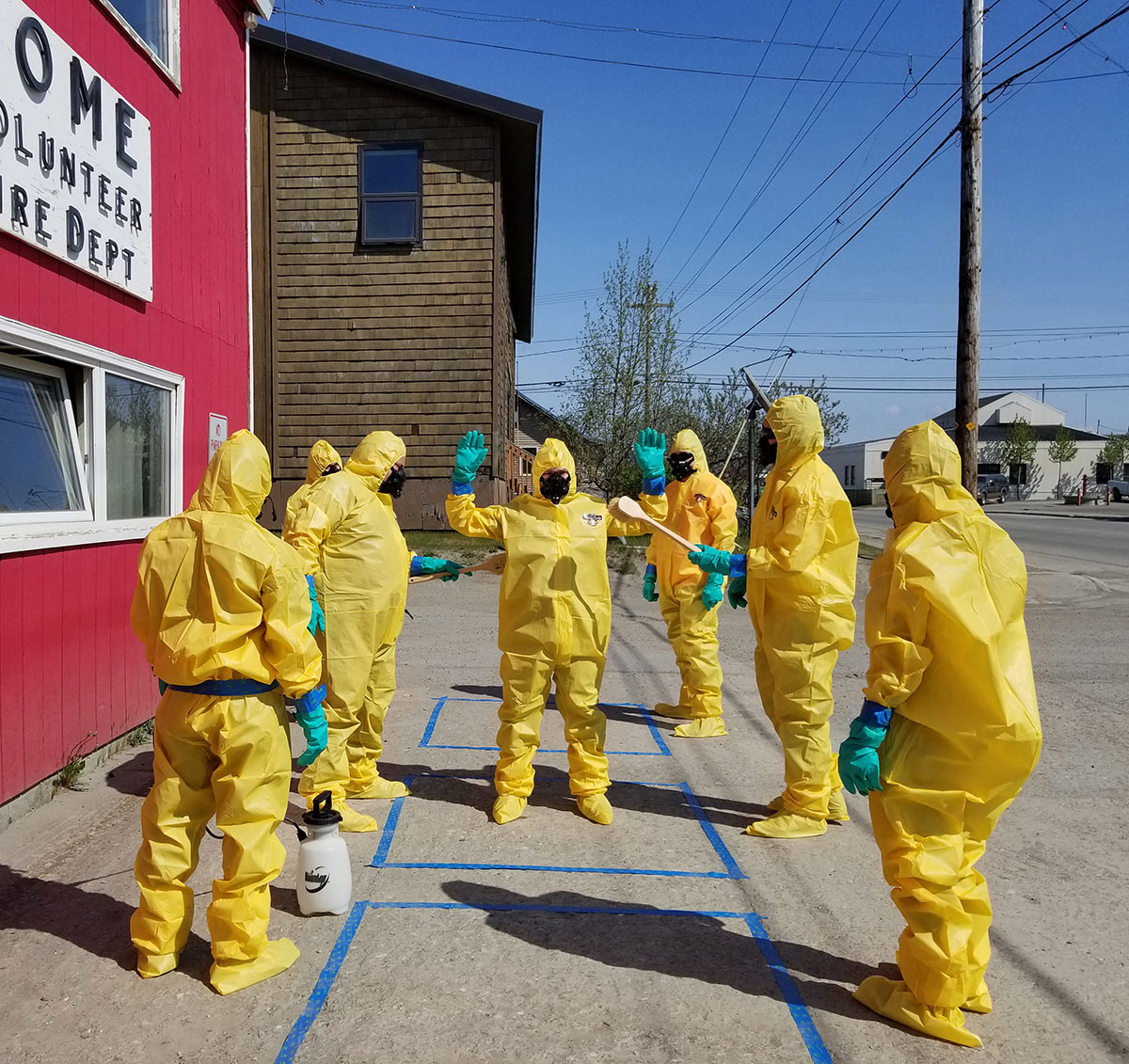
exercises at the Nome Volunteer Fire Dept.
Bottom right: Students taking a forty-hour Hazardous Waste Operations and Emergency Response course from Environmental Management, Inc. go through a decontamination exercise in a hands-on area of its building in Anchorage.
Bottom left: Students try on Level A suits during a Hazardous Waste Operations and Emergency Response course at Environmental Management, Inc. in Anchorage.
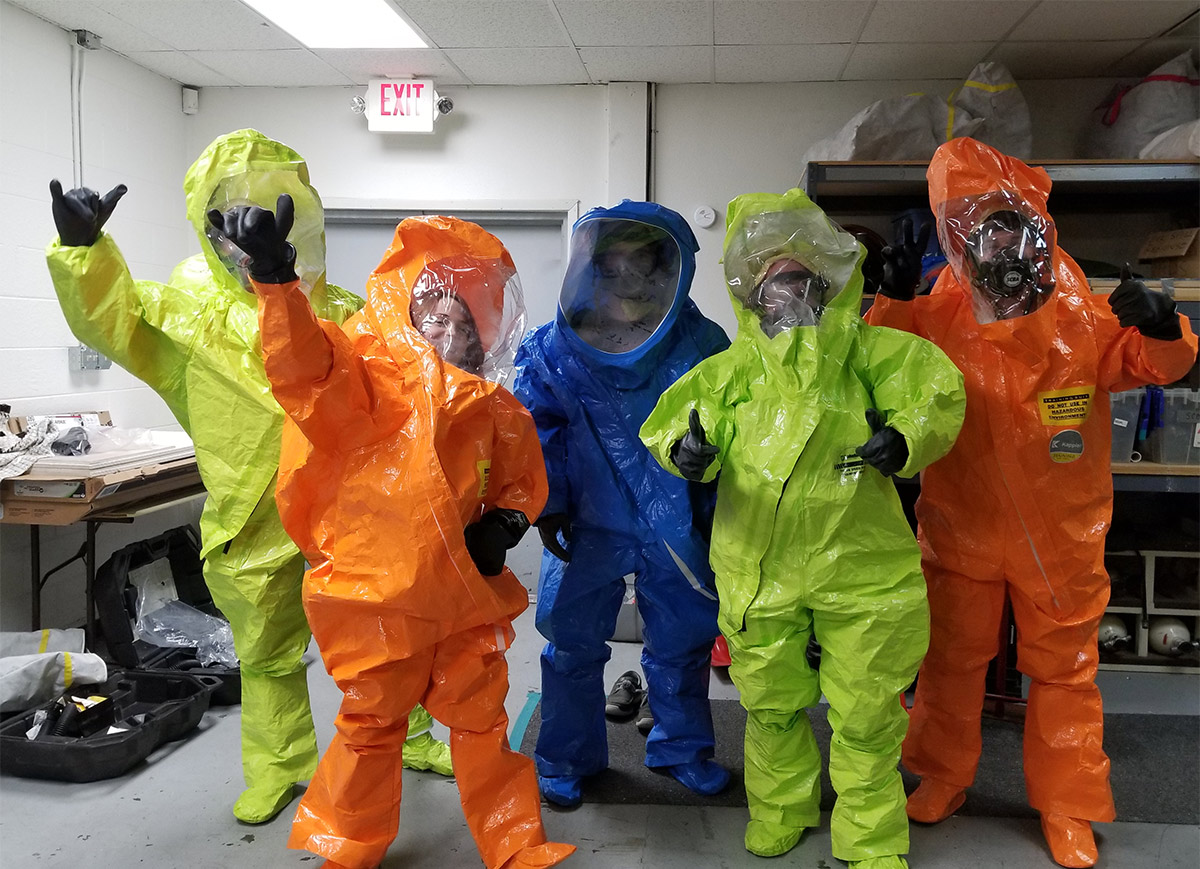
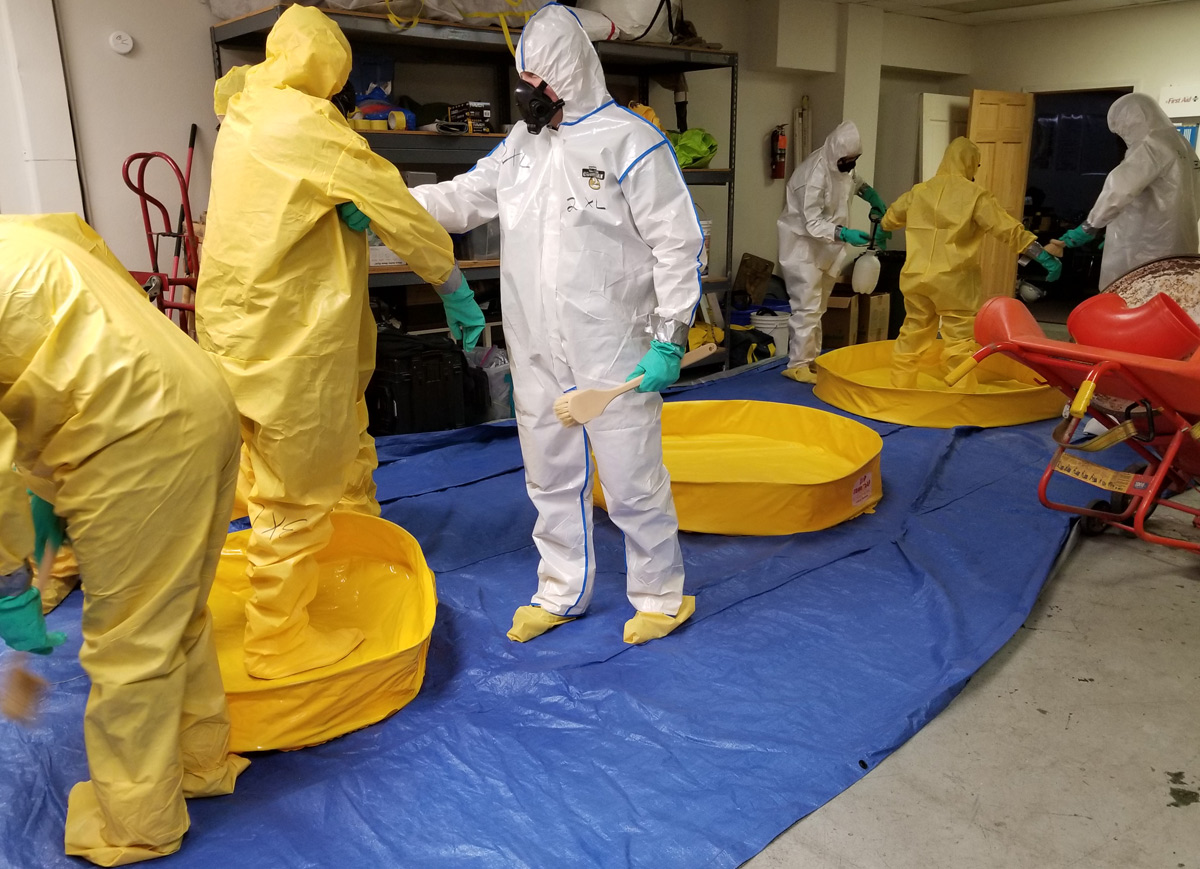
“As soon as the pandemic hit, we got a couple of COVID-19 classes that started immediately over Zoom,” Smith says. “We were able to get a lot of information to people in remote communities about COVID-19 and how to prevent the spread. We think those classes were very helpful in being able to convey that information to people who wouldn’t have necessarily had any way to get it.”
Associated General Contractors of Alaska members who take EMI classes receive a 10 percent discount off their class fee. Smith says belonging to AGC is great because membership allows EMI to receive a discounted rental fee at the facility it uses in Fairbanks for training.
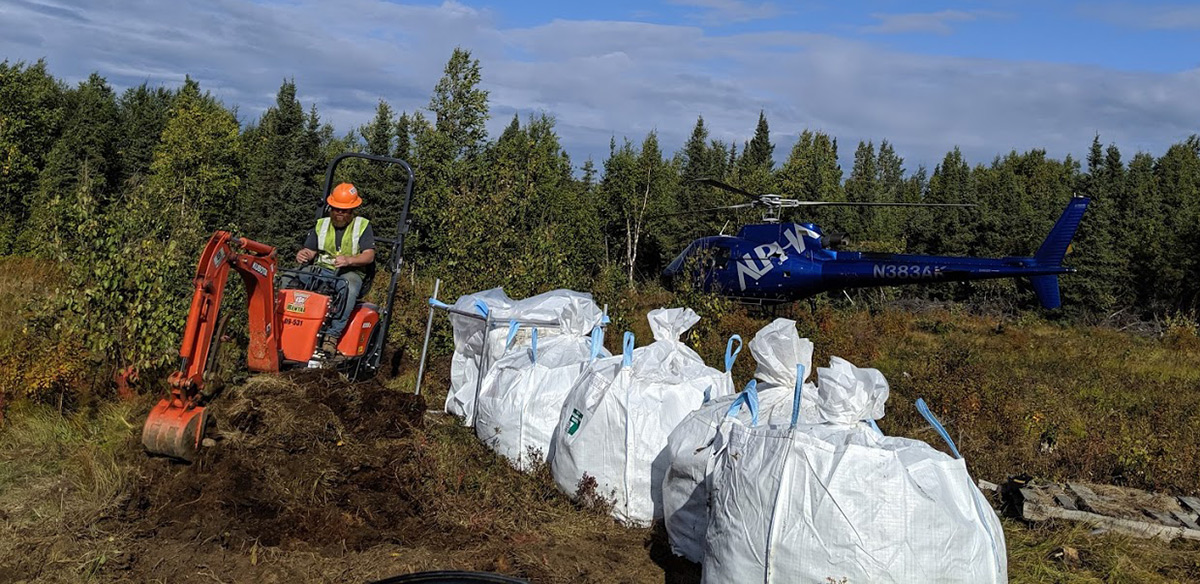
“Being a member of AGC helps us keep up to date with the current hot topics and issues that might affect our clients and projects,” she says.
“Only in Alaska, right?” Marshall says.
EMI teamed up with sister company Central Environmental, Inc. which provided the experienced operator to advance and backfill the excavation, while Tanana Commercial Company provided the remote site logistics, including coordinating with the helicopter and barge services. EMI coordinated with the regulatory agencies and project stakeholders and performed the sampling.
“Coordinating with multiple parties, understanding the logistical challenges that come with remote site work, and ensuring the scope is completed within schedule and on or under budget is what EMI does best,” Marshall says.